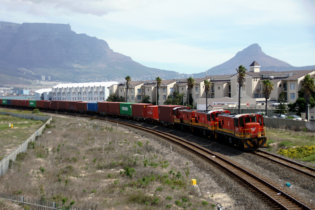By Jacqueline Holman
South African state logistics group Transnet railed 68 million mt/year of coal in the 2011-12 financial year and plans to increase coal rail capacity to 81 million mt/year in the next five years, Transnet Commercial general manager Divyesh Kalan told the 11th Coaltrans conference in Johannesburg Friday.
The logistics group started an 81 million mt/year expansion project in April 2011, which has already resulted in increased performance, with Transnet currently running at around 73-81 million mt/year.
“The project has been bearing some fruit – through bringing a number of new assets online we have caught industry by surprise and the challenge now is that the rail capacity is available, but we need industry to fill the wagons,” Kalan said.
He said that coal availability at the current tempo is being challenged and more collaboration is needed between stakeholders to optimize the whole supply chain.
“We must ensure that capacity and coal availability are coordinated going forward,” Kalan said.
He also noted that the South African coal system needs to be considered holistically as there are many interdependencies in the coal chain and all parties need to look to evacuate coal efficiently.
Transnet also plans to achieve a target of 91 million mt/year and beyond as soon as possible, through the development of the Swazilink and Waterberg programs.
Kalan said that the coal system has four key components, namely the Waterberg Feeder line, the coal backbone system through the Mpumalanga and Witbank area, the Richards Bay Coal Terminal (RBCT) coal export line and the Swazilink system, which is aimed to evacuate general freight off the RBCT line and create more slots for coal capacity allocation.
He said that upgrades to these components will take place in phases, with the new line to the Waterberg coalfield highly dependent on volumes.
The export line upgrade and the Swazilink program will take place in parallel, while the backbone system upgrade on the track will be well ahead of demand for more capacity.
Kalan said that all these developments assume that the 81 million mt/year expansion project is implemented, while rolling coal stock must also match infrastructure upgrades.
He said that challenges to rail system development include producers requiring domestic and export services, capacity and allocation challenges for existing and new entrants and smaller produces reducing system efficiencies with smaller parcel sizes resulting in reduced capacity for the same tonnage moves.
Kalan added that electricity supply to the rail network is also an issue, as diesel is not cost effective.








